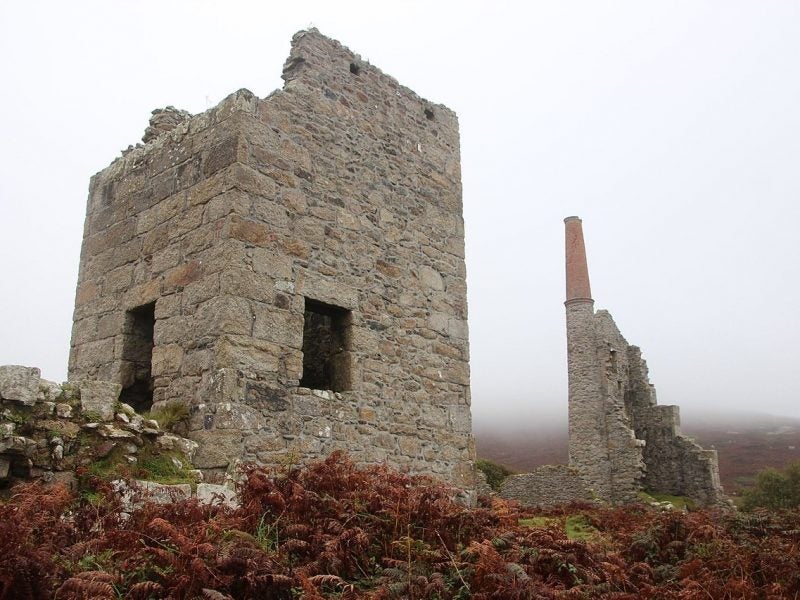
Australia has a long history of tin mining, but on the global stage its production quantities are hugely eclipsed by China, Indonesia, Peru, and others; the United States Geological Survey estimated that in 2019, China produced five times as much of the white metal as Australia. Nonetheless, Australia is home to the world’s largest underground tin mine, Renison, which on its own accounts for 85% of the country’s economic tin resource.
Australia’s largest tin producer
Tin was discovered at Renison, on the west coast of Tasmania, by the mine’s namesake George Renison Bell in 1890, with production at the site beginning soon after. The mine was acquired in 1958 by Mount Lyell Mining and Railway Company, which began the modern era of mining at the site. Ownership of the project changed hands several times, through various acquisitions and consolidations, before low tin prices led to the suspension of activities at the mine in 2005.
The mine was subsequently recommissioned in 2008, with first production beginning that year, following the merger of Bluestone Tin and Metals Exploration to form Metals X. Renison is currently operated through the Bluestone Mines Tasmania Joint Venture (BMTJV), with Metals X and Chinese tin producer and exporter Yunnan Tin both holding 50% of the venture.
Renison began its Area 5 mining optimisation study in August 2019 to identify the best development and mining strategy for the Area 5 ore body. The study revealed an ore reserve of 2.3Mt at 1.87% tin for 61,900 tonnes of contained tin, with the total Renison ore reserve increasing by 46% to 120,300 tonnes of contained tin. The 2020 life-of-mine (LOM) plan provides for a mine life of 10 years, with a total of 9.27Mt mined in that period at an average grade of 1.38% tin, for 128,000 tonnes of contained tin.
The Area 5 development requires approximately $50m-$55m of capital to be invested over the next two years, predominantly in underground infrastructure. The operators are optimistic about the prospects of further mining at Renison, with Metals X’s LOM plan suggesting potential to extend the mine life beyond 10 years owing to Renison’s existing resources and exploration.
Commenting on Renison’s resource and reserve update, Metals X CEO Mike Spreadborough said: “The results from the 2020 Mineral Resource and Ore Reserve update represent yet another outstanding year for the operation and will support a mine life in excess of 10 years.”
The future of Australian tin
Despite comparatively massive tin production in China and Indonesia, Australia remains a globally significant producer of tin concentrates. According to the International Tin Association (ITA), Renison and other, smaller producers in Australia contributed 7.7kt to the global market in 2019.
Australia is highly prospective for tin, with nearly 90 named prospects or deposits across the country. A majority of exploration and development takes place along the Federal-Bassett Fault in Tasmania, which is the main structural control on the mineralisation at the Renison operation. Many junior mining companies hope to find tin mineralisation further along the fault, and Metals X itself, through its interest in the BMTJV, holds rights in 45km2 of highly prospective tenure surrounding the Renison site. That joint venture is active in regional exploration, and has developed a pipeline of targets that are being tested.
ITA market analyst James Willoughby said that Australia is “probably the most active region for tin exploration”, citing exploration and development company Stellar Resources’ Heemskirk Tin project and tin production and exploration company Elementos’ Cleveland project – both in Tasmania – as two of the larger projects being developed.
Australian tin projects in the pipeline
A May 2019 resource estimate defined a total mineral resource for the Heemskirk tin deposits of 6.6Mt at 1.1% tin for 70,390 tonnes of contained tin, and Stellar Resources claim that the Heemskirk deposits share the same ore genesis and geology as the Renison operation situated just 18km to the North East. The company hopes to attract investors with the comparisons to Renison, which has had its mine life extended several times throughout its history.
Elementos, meanwhile, is aiming to commence tin production in 2022 and hopes to capitalise on a forecast shortfall of the global tin supply; exacerbated by the Covid-19 pandemic, tin is expected to move into a supply deficit in 2020. Elementos owns 100% of the Cleveland project, which as of September 2018 was estimated to hold a total mineral resource of 7.47Mt at 0.75% tin, for 56,100 tonnes of contained tin, as well as 0.3% copper for 22,200 tonnes of contained copper.
It’s not all sunshine and flowers for Australia’s tin miners, however. Aus Tin Mining have had notable struggles recently, largely centred around the Granville mine. Aus Tin Mining began operations at Granville in 2016 after acquiring the site, and in 2018 work began to expand the mine below the existing open pit. In September 2019 the mine was put on temporary care and maintenance owing to equipment failures, and Aus Tin began working to raise funds to restart the mine.
The company found funding in December 2019, with the aim of restarting operations in March 2020. However, while the company secured equipment to restart the mine and improve its processing plant, poor market conditions and the effect of Covid-19 led the company to attempt to sell the mine. A deal to sell the operation to TenStar Mining fell through in June, and Granville remains on care and maintenance. The situation with Granville has also meant that Aus Tin Mining’s major asset, the Taronga project, has been forced to delay work.



